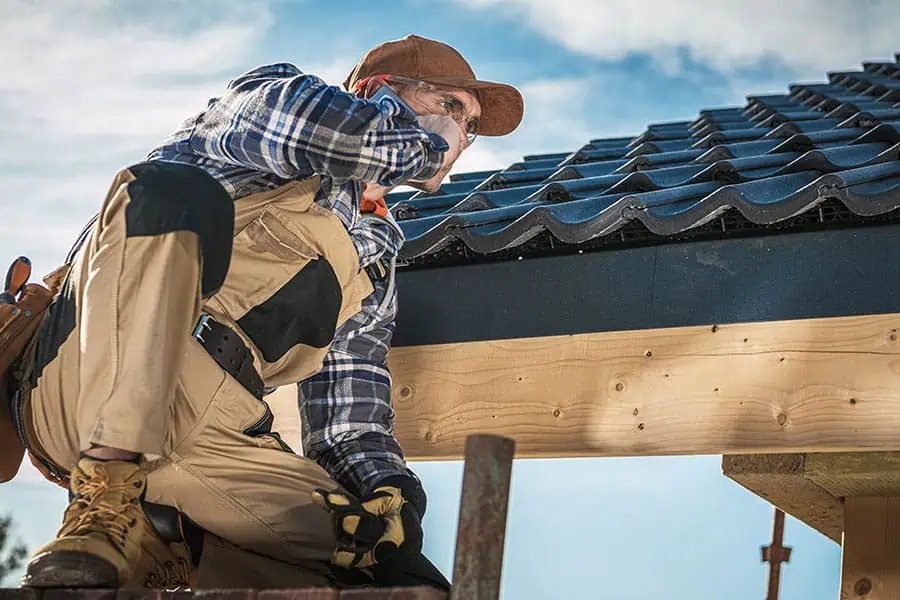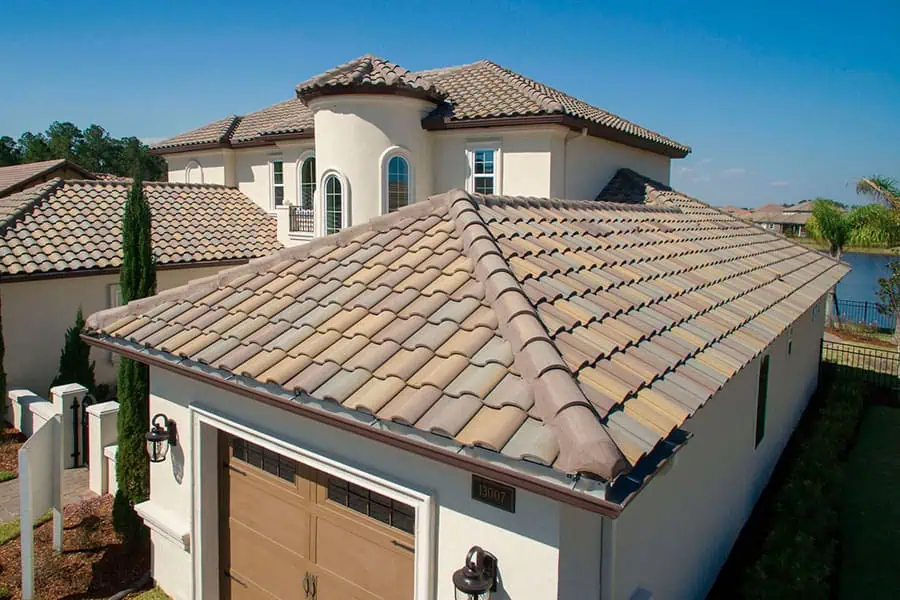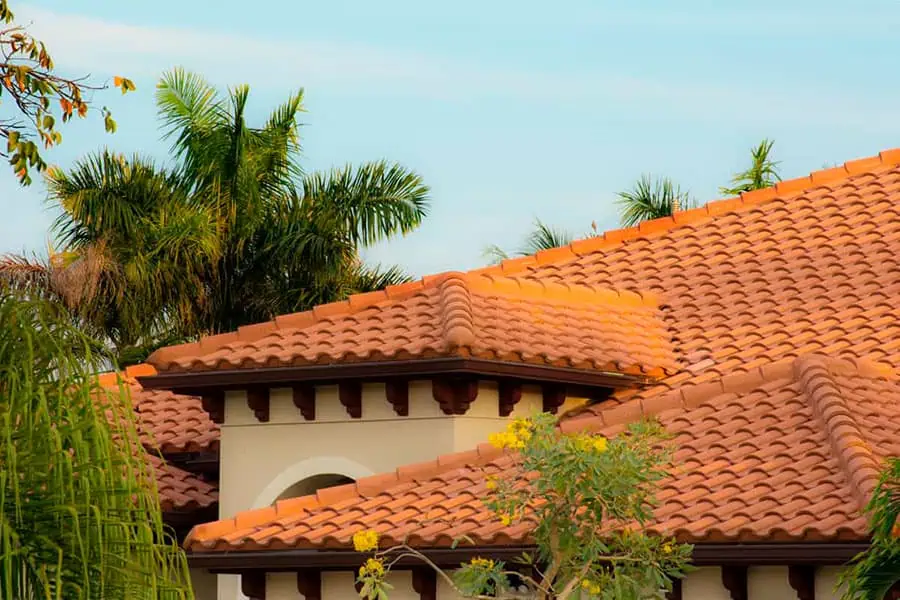Roof Replacement For Tiles in Florida

Introduction
Tile roof replacement involves the process of removing old or damaged roof tiles and installing new ones. This is crucial for maintaining the structural integrity and aesthetic appeal of a building. A well-maintained tile roof can protect a home from weather elements, enhance energy efficiency, and increase property value.
Types of Roof Tiles
Clay Tiles
Characteristics:
- Made from natural clay, fired in a kiln.
- Available in various colors and styles.
Pros:
- Long-lasting and durable.
- Resistant to fire and insects.
Cons:
- Heavy, requiring strong roof support.
- Can be expensive.
Concrete Tiles
Characteristics:
- Made from a mixture of sand, cement, and water.
- Can mimic the appearance of clay or slate tiles.
Pros:
- Durable and cost-effective.
- Available in various colors and styles.
Cons:
- Heavy, similar to clay tiles.
- Can absorb water, leading to potential mold growth.
Slate Tiles
Characteristics:
- Made from natural stone.
- Known for their distinctive, elegant appearance.
Pros:
- Extremely durable and long-lasting.
- Fire-resistant and environmentally friendly.
Cons:
- Very heavy, requiring additional structural support.
- High cost and complex installation.
Metal Tiles
Characteristics:
- Made from materials like steel, aluminum, or copper.
- Often coated to prevent rust and corrosion.
Pros:
- Lightweight and easy to install.
- Durable and resistant to extreme weather.
Cons:
- Can be noisy during rain or hail.
- May dent or scratch easily.

Reasons for Tile Roof Replacement
Damage and Wear
- Cracked or Broken Tiles: Exposure to weather can cause tiles to crack or break, necessitating replacement.
- Water Damage: Leaks and water infiltration can damage the roof structure and interior of the home.
Aesthetic Upgrades
- Modernizing the Look: Replacing old tiles can update the appearance of a home.
- Increasing Property Value: A new roof can enhance curb appeal and boost property value.
Structural Issues
- Underlayment Deterioration: The underlayment, which provides additional waterproofing, can deteriorate over time.
- Roof Deck Damage: Prolonged exposure to moisture can damage the roof deck, requiring replacement.
Preparation for Replacement
Inspection
- Assessing the Extent of Damage: A thorough inspection helps determine the scope of the replacement.
- Identifying Underlying Issues: Detecting problems like mold or structural damage is crucial before starting the replacement.
Cost Estimation
- Factors Affecting Cost: Material type, roof size, and labor charges influence the overall cost.
- Budget Planning: Proper budgeting ensures the project stays within financial limits.
Permits and Regulations
- Local Building Codes: Compliance with local regulations is necessary.
- Necessary Permits: Obtaining the required permits ensures the project is legally compliant.
Replacement Process
Removing Old Tiles
- Safe Removal Techniques: Careful removal prevents damage to the underlying structure.
- Disposal of Old Materials: Proper disposal of old tiles is essential for environmental compliance.
Repairing the Roof Structure
- Fixing the Underlayment: Replacing or repairing the underlayment ensures waterproofing.
- Addressing Structural Damage: Any damage to the roof deck or supports must be repaired.
Installing New Tiles
- Laying the Underlayment: A new underlayment is installed to provide a waterproof barrier.
- Proper Tile Placement and Securing: Tiles are carefully placed and secured to ensure durability.
Finishing Touches
- Sealing and Waterproofing: Additional sealing ensures the roof is watertight.
- Final Inspection: A thorough inspection ensures the roof is properly installed.
Maintenance After Replacement
Regular Inspections
- Frequency and What to Look For: Regular inspections help identify and address issues early.
Cleaning
- Safe Cleaning Methods: Gentle cleaning methods prevent damage to the tiles.
- Avoiding Damage: Avoiding harsh chemicals and pressure washing preserves the tiles.
Repairs
- Addressing Minor Issues Promptly: Timely repairs prevent minor issues from becoming major problems.
- Professional vs. DIY Repairs: Knowing when to call a professional is crucial for maintaining the roof.
Cost Considerations
Material Costs
- Price Comparison of Different Tile Types: Understanding the cost differences helps in budgeting.
Labor Costs
- Factors Influencing Labor Charges: Complexity of the roof and local labor rates affect costs.
Additional Expenses
- Permits: Costs associated with obtaining necessary permits.
- Disposal Fees: Fees for disposing of old materials.

Benefits of Tile Roof Replacement
Durability
- Longevity of Different Tile Types: Tile roofs can last several decades with proper maintenance.
Energy Efficiency
- Insulation Properties: Tile roofs can improve energy efficiency by providing better insulation.
Aesthetic Appeal
- Enhancing Curb Appeal: New tiles can significantly improve the appearance of a home.
Property Value
- Impact on Resale Value: A new roof can increase the resale value of a property.
Common Challenges
Weather Conditions
- Impact on the Replacement Process: Weather can delay or complicate the replacement process.
Finding Skilled Labor
- Importance of Experienced Contractors: Skilled contractors ensure quality installation.
Unexpected Issues
- Hidden Damage: Unforeseen damage can increase costs and extend the project timeline.
- Cost Overruns: Proper planning and budgeting help mitigate unexpected expenses.
Conclusion
Replacing a tile roof is a significant investment that can enhance the durability, energy efficiency, and aesthetic appeal of a home. Regular maintenance and timely repairs are essential to maximize the lifespan of a tile roof.
